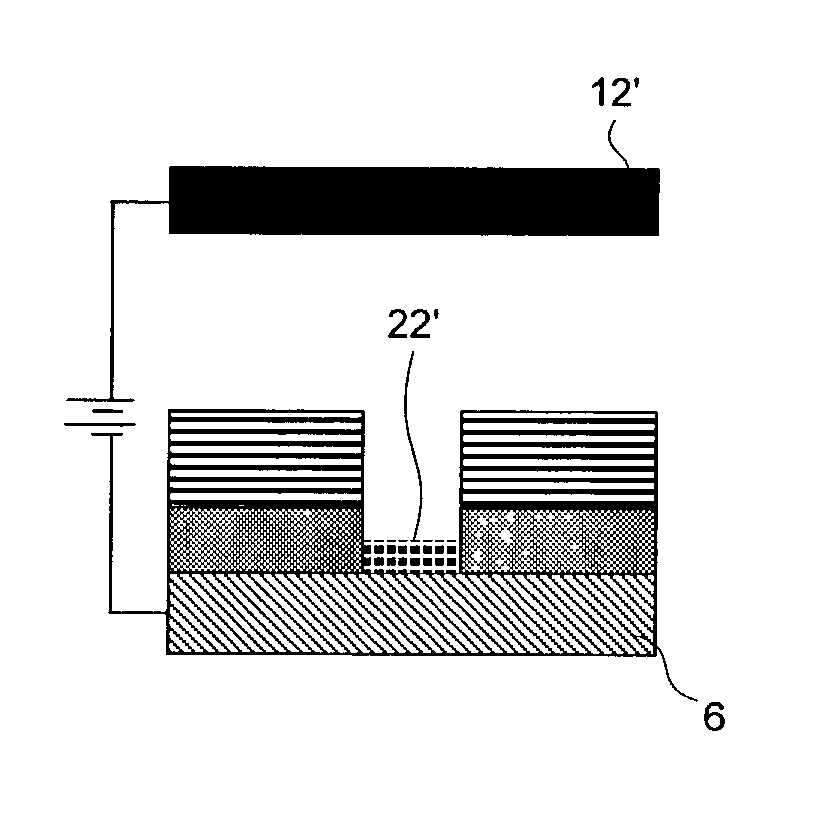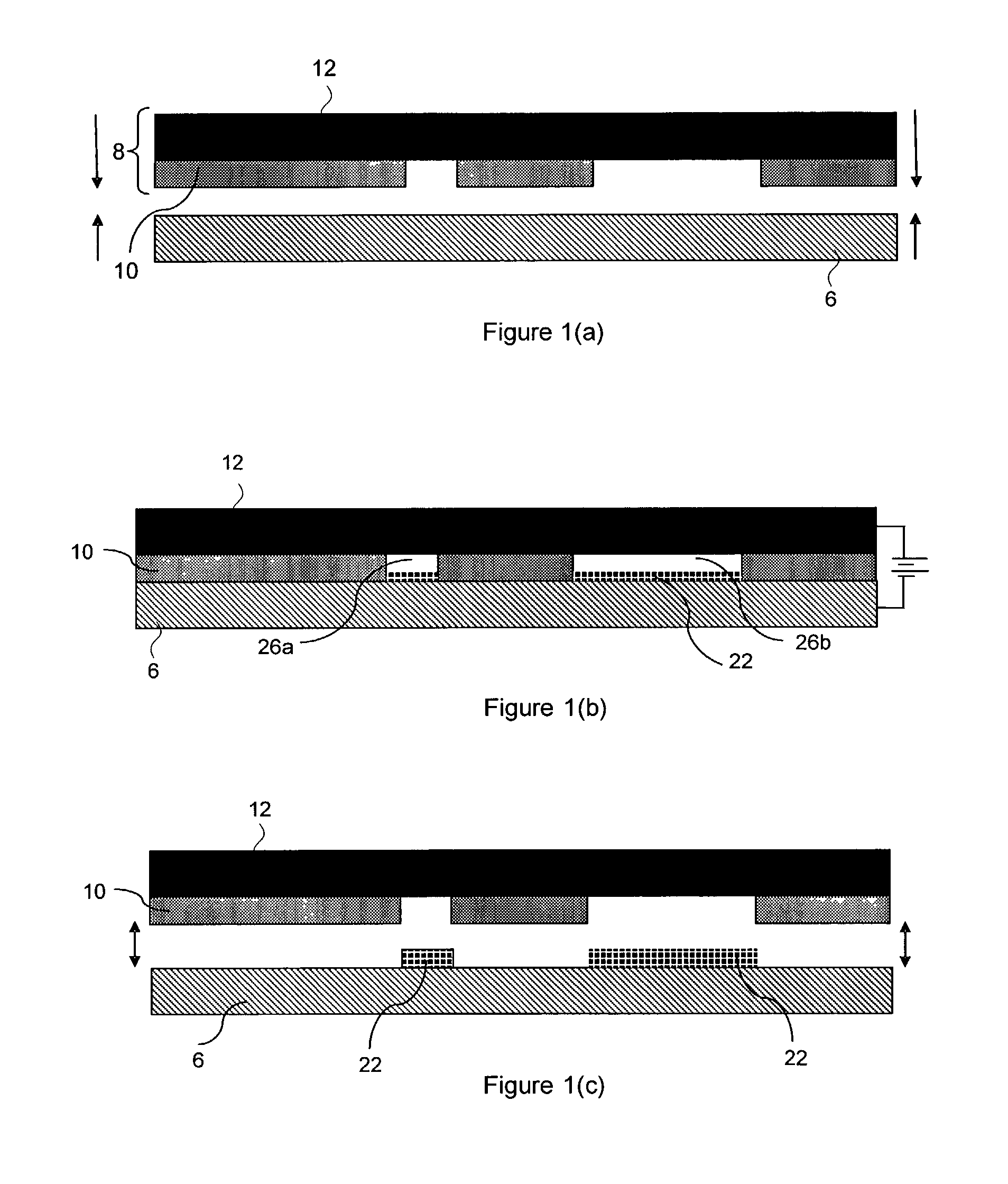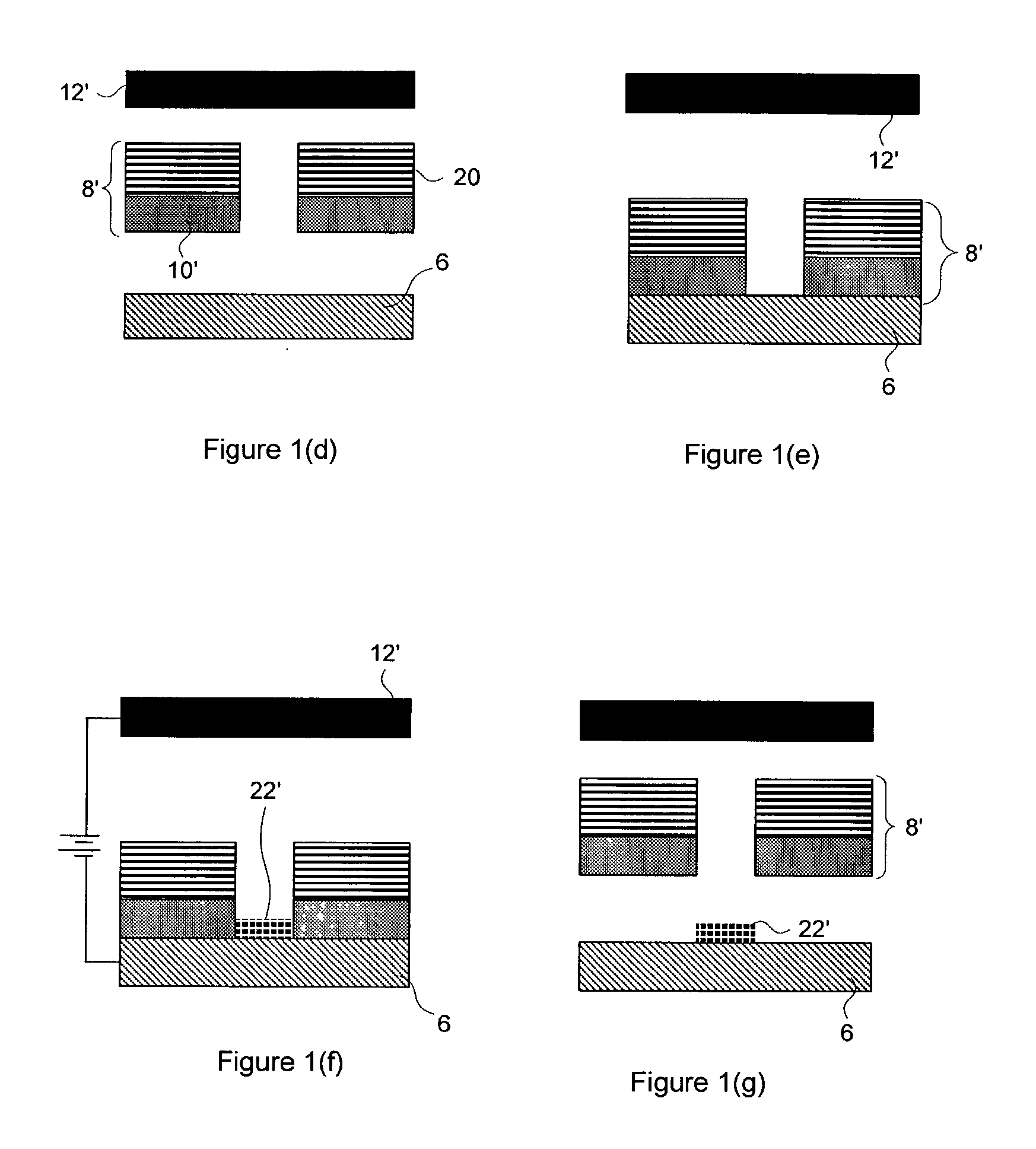Methods of and apparatus for making high aspect ratio microelectromechanical structures
a microelectromechanical and high aspect ratio technology, applied in the direction of microstructural technology, conductive pattern reinforcement, electrolysis components, etc., can solve the problems of affecting the effect of global thinning, destroying the separation of masking material from the substrate, and being extremely difficult to remove after the electrodeposition process
- Summary
- Abstract
- Description
- Claims
- Application Information
AI Technical Summary
Problems solved by technology
Method used
Image
Examples
Embodiment Construction
[0109] FIGS. 1(a)-1(g), 2(a)-2(f), and 3(a)-3(c) illustrate various aspects of electrochemical fabrication that are known. Other electrochemical fabrication techniques are set forth in the '630 patent referenced above, in the various previously incorporated publications, in patent applications incorporated herein by reference, still others may be derived from combinations of various approaches described in these publications, patents, and applications, or are otherwise known or ascertainable by those of skill in the art. All of these techniques may be combined with those of the present invention to yield enhanced embodiments.
[0110] Various embodiments of the invention present techniques for forming structures (e.g. HARMS-type structures) via an electrochemical extrusion (ELEX.TM.) process. Some preferred embodiments perform the extrusion process via depositions through an anodeless conformable contact mask that is initially pressed against a substrate and is then progressively pulle...
PUM
| Property | Measurement | Unit |
|---|---|---|
| Aspect Ratio | aaaaa | aaaaa |
| thicknesses | aaaaa | aaaaa |
| thickness | aaaaa | aaaaa |
Abstract
Description
Claims
Application Information
 Login to View More
Login to View More - R&D
- Intellectual Property
- Life Sciences
- Materials
- Tech Scout
- Unparalleled Data Quality
- Higher Quality Content
- 60% Fewer Hallucinations
Browse by: Latest US Patents, China's latest patents, Technical Efficacy Thesaurus, Application Domain, Technology Topic, Popular Technical Reports.
© 2025 PatSnap. All rights reserved.Legal|Privacy policy|Modern Slavery Act Transparency Statement|Sitemap|About US| Contact US: help@patsnap.com



